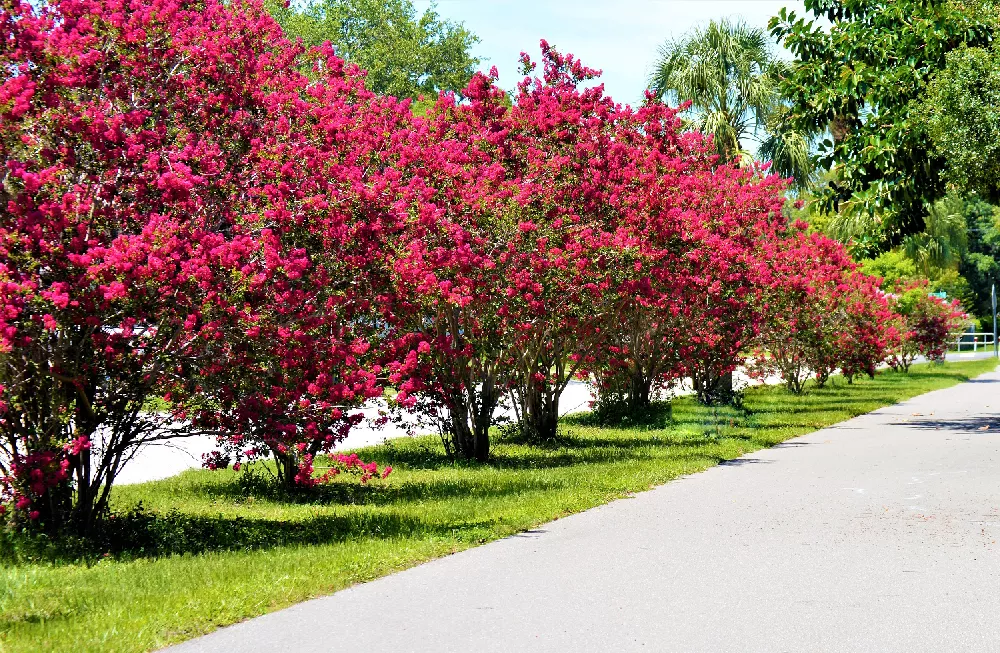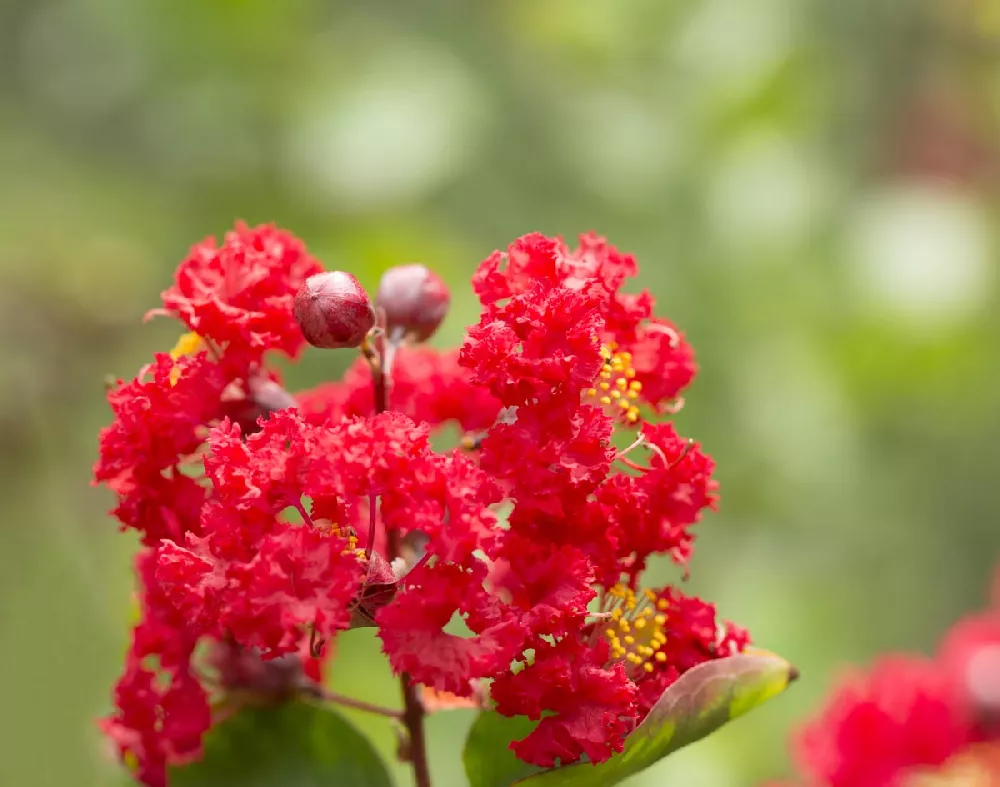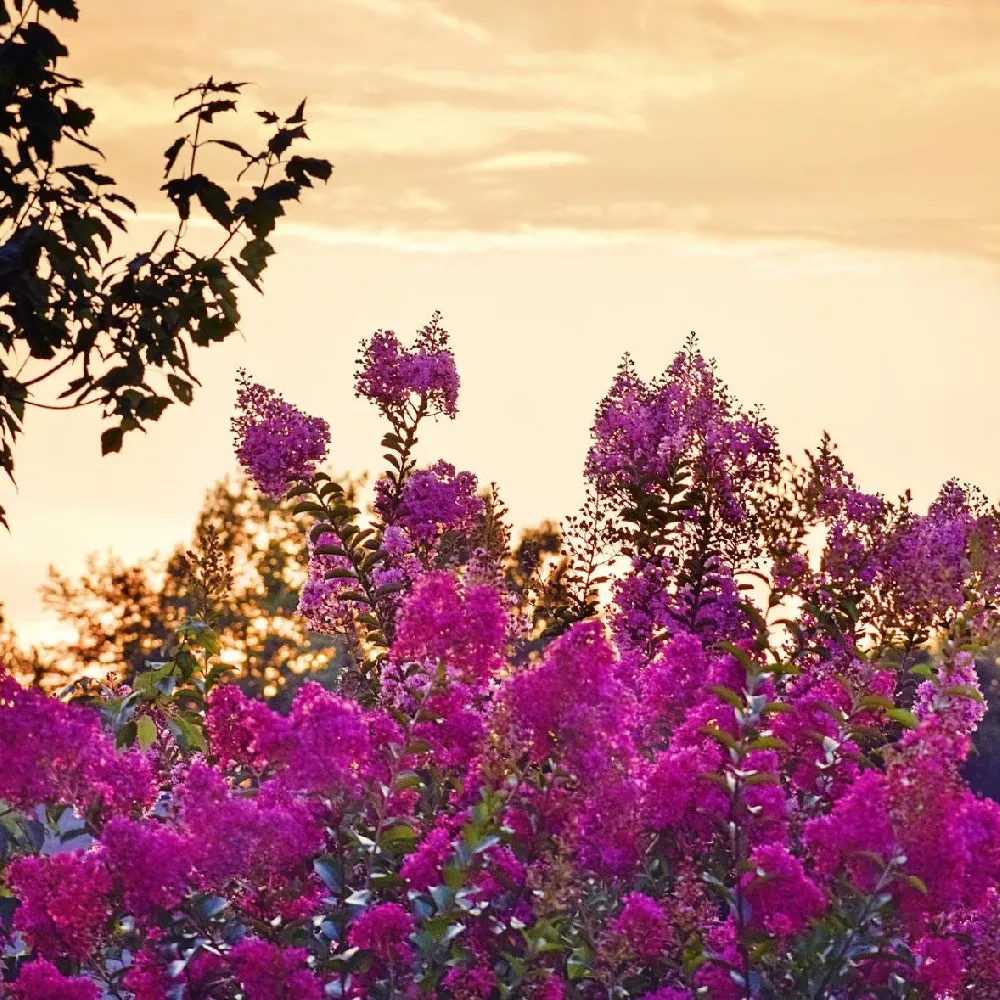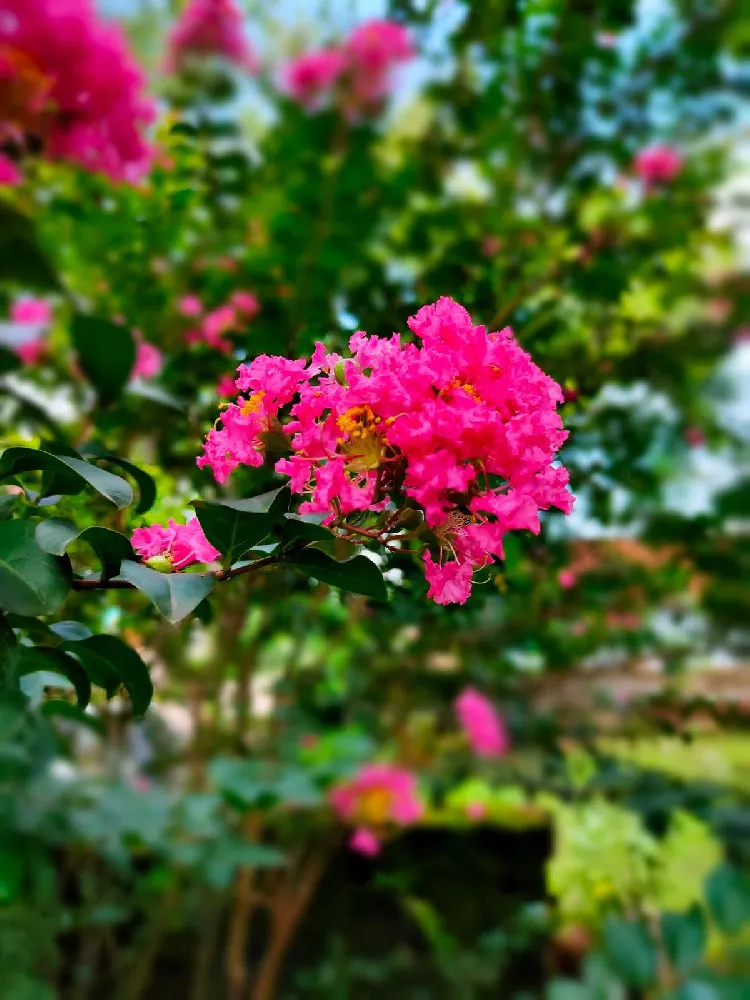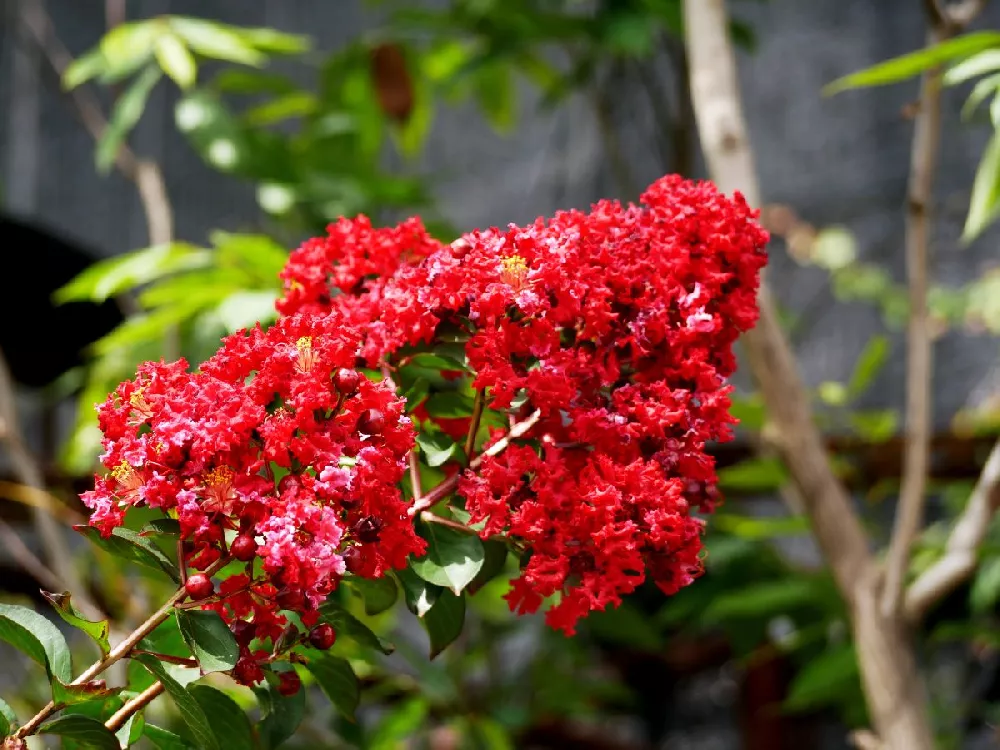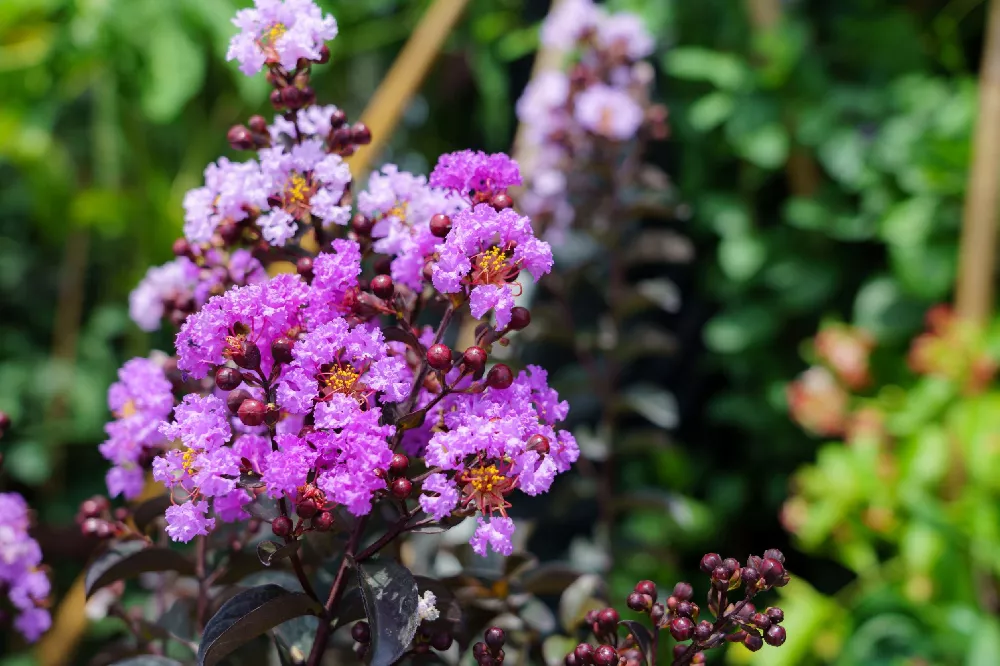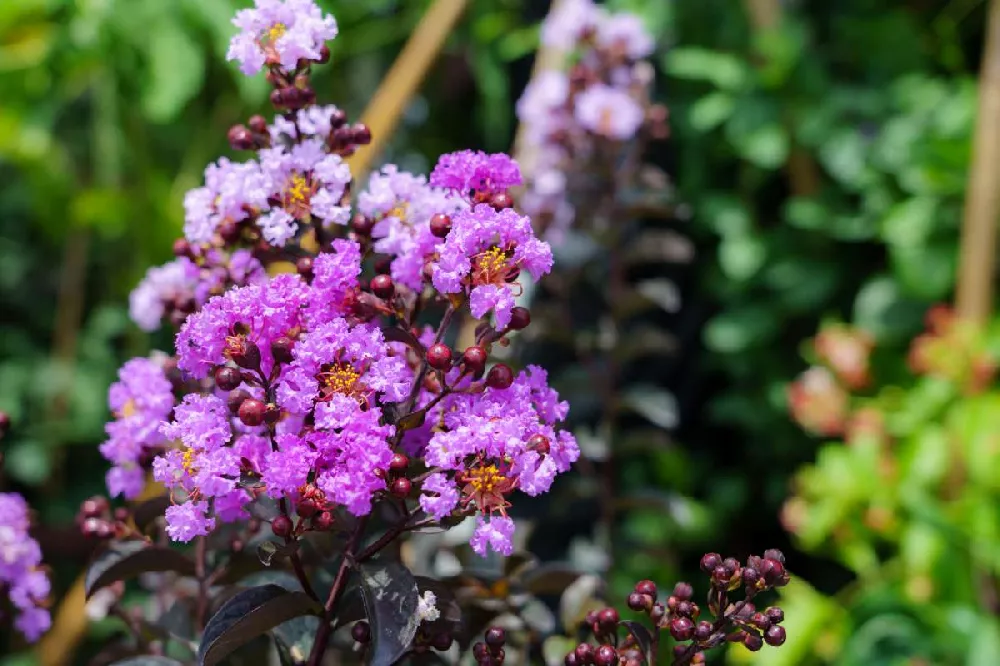Arapaho Crape Myrtle for Sale - Buying & Growing Guide
Few landscape plants are as well-regarded as the crape myrtle, and the Arapaho crape myrtle, Lagerstroemia indica 'Arapaho,' may just be the best of them all. This plant, which can be grown as a tall bush or a multi-stem, mid-sized tree, offers a spectacular display of red blossoms that blanket the tree throughout the summer. But that's not all they offer. Spring leaves are a deep, rich red, slowly changing to dark green. In fall, the leaves turn purple-red for another display of color. In winter, the mottled bark offers textural interest at a time when other plants have gone dormant. In addition, the Arapaho crape myrtle offers excellent resistance to powdery mildew, a blight for most crape myrtles. Here are a few other reasons to add an Arapaho crape myrtle to your garden:
- This fast-growing tree can add 3 feet of new growth each year until maturity.
- Generally drought-resistant, it only needs supplemental watering in severely hot or dry weather.
- Left unpruned, it can be a stunning hedge or windbreak.
Enter your zip code to find nearby stores that may carry this plant.
Plant Care
Sunlight

The Arapaho crape myrtle does best and flowers most profusely in full sun, with six or more hours of direct light a day.
Watering
Mature plants are drought-resistant, but they appreciate supplemental watering during very hot or dry weather.
Fertilizing

Feed this plant in the spring with a high-nitrogen fertilizer, such as a 20-10-10 slow-release formula.
Planting and Care
Planting instructions
Site your crape myrtle where it will get bountiful sun for at least six hours a day, in soil that drains well. Unpot your sapling and tease out any encircling roots, which can girdle your tree and slowly kill it. Dig a hole that’s as deep as the root ball and twice as wide. Place the plant in the hole, spreading out the roots. Fill in around the root ball with topsoil, tamping down as you go to eliminate air pockets. Water thoroughly. Apply a 2- to 3-inch layer of an organic mulch, such as bark chips, around the root zone to conserve water and hinder weed growth.
Watering and nutrients
Water every few days when first planted, until you see robust new growth starting to appear. Then cut back to once-a-week watering for the remainder of the first year. A mature crape myrtle won’t need a great deal of supplemental watering unless the weather is very hot or dry. Check the soil 2 inches below the surface; if it is dry, give your plant a drink. Feed your Arapaho crape myrtle in spring with a high-nitrogen fertilizer such as a 20-10-10 formulation. Use a slow-release formula, and avoid over-fertilizing, which may inhibit blooms.
Pollination
The Arapaho crape myrtle is a hybrid — it was created by the U.S. National Arboretum in the 1980s as they searched for a crape myrtle that would be resistant to powdery mildew. This means it does not come true to seed and must be propagated by cuttings. Despite this, the flowers of this crape myrtle are very attractive to pollinators, and especially bees of many kinds.
Pruning
Your Arapaho crape myrtle can be left unpruned, except for broken, diseased, or damaged limbs, in which case it will become a roughly vase-shaped bush. Most gardeners, however, prune out all but four or five of the strongest trunks, as well as any suckers at the base of the trunks, so that it assumes the form of a mid-sized tree. It can be pruned severely for size in late winter, but this can lead to awkward pollarded growth at the top of the tree that is susceptible to disease and pests.
Pests and diseases
Pests of the Arapaho crape myrtle include crape myrtle aphids, which can be handled by releasing predatory insects, such as ladybugs and Japanese beetles, which can be picked off by hand or controlled by placing a trap about 50 feet away from the tree. Milky spore can also be used to eliminate these insects. Arapaho crape myrtles are resistant to powdery mildew, which is the most common disease of crape myrtles. They may also experience cercospora leaf spot, though it isn’t common.
Achieving maximum results
With many ornamental trees, there are established methods of pruning. Not so the crape myrtle. In fact, you may hear gardeners talk about “crape murder” when they see a tree that has been lopped off at the top. So let’s start with what you should definitely do when you have a crape myrtle: monitor the tree for branches that are broken or diseased or that have died, and trim these back to an adjoining branch whenever you see them. After that, how you prune your crape myrtle is based partly on whether you want a tree or a bush to fill the spot. Left unpruned, they will grow tall and bushy, and can be used as a privacy screen or hedge. If you prefer, you can prune out some, but not all, of the main trunk-like branches, which will lead the plant to grow into a 15- to 25-foot specimen tree. You can also grow your crape myrtle into a single-trunk tree by trimming out all but the most sturdy trunk. Be wary of trimming back the height of your tree. Trim lightly, cutting out no more than one-third of the top growth per year, so you cannot be accused of “crape murder.”
FAQs
Where can I grow the Arapaho crape myrtle?
How close together can I plant Arapaho crape myrtles?
These mid-sized trees can reach a height of up to 25 feet, with a mature width of 10 to 20 feet. If grown in an optimal setting, you'll want to leave roughly 8 to 10 feet between trees. You may be able to plant them slightly closer together if you would like them to act as a hedge or windbreak or if you're planting them in less than full sun, which means they may remain somewhat smaller.
How is the Arapaho crape myrtle best used in my landscape?
These crape myrtles make an excellent specimen tree for a front or back yard, with shade-tolerant perennials planted underneath. They are an attractive street-side tree, as well, bringing color and interest to an area that is often forgotten in landscape plans. Mass plantings are spectacular: consider, for example, an informal grouping of three or five planted next to your home. Tolerant of urban pollution, these crape myrtles are also sized small enough to make a statement in petite city lots.
Compare Similar Products
You can't add more Product Name - Product size to the cart.
OK